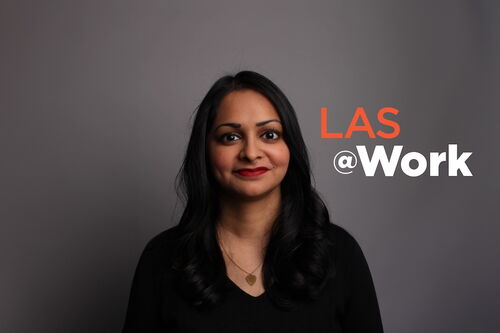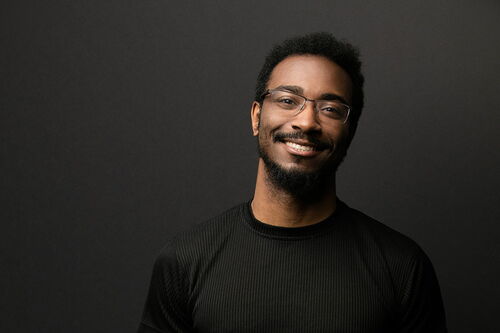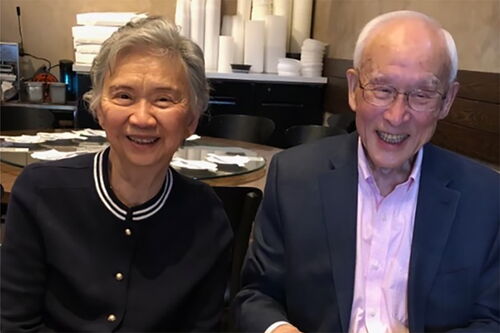‘Outrageous’ innovation
Brock Siegel (PhD, '74, chemistry) still remembers the meeting in February of 1998 where it all began. What started out as a typical budget meeting at Applied Biosystems suddenly took a dramatic turn.
At the time, Applied Biosystems was known for developing the world’s best-selling DNA sequencing equipment, which the government was using to map all of the genes within a person. But while discussing their next generation of equipment, the CEO suddenly suggested that if their new line was so good, maybe they should use it themselves to sequence the human genome.
After making some on-the-spot calculations, they estimated they could map the human genome in about 16 to 20 months using about 250 instruments—much faster than the public-funded project, which had been going on for years.
“The room went silent,” Siegel recalls. “We could see immediately that the impossible task of sequencing the human genome was in fact possible with this new technology. The concept of Celera Genomics was born—or as some thought, hatched.”
Siegel, an LAS chemistry graduate, has been at the center of the genetic engineering revolution for most of his career, and he was even honored to have 13 tubes of his own blood used as a small part of the first mapped Celera human genome. As his latest honor, he has earned a 2009 LAS Alumni Achievement Award.
Siegel grew up in Olean, N. Y., in a house where science thrived. One of his older brothers would be in the backyard taking apart an automobile or dissecting animals, while a second brother was in the garage using two 15,000-volt transformers to create an underwater spark machine. Meanwhile, Siegel was usually in the basement with the classic Gilbert chemistry set, nearly setting the house on fire.
He remembers once filling the basement with bromine gas, which created nice colors if he added various metals and ignited it. Siegel always kept a large bucket of baking soda handy to put out any fires.
After majoring in chemistry at Syracuse University, a mail theft in his dorm changed Siegel’s life. Siegel says he might have ended up at the University of California–Berkeley if the acceptance letter had not been stolen in the Valentine’s Day theft.
As a result, he wound up at U of I, which he later realized was a much better choice, with its strong emphasis on organic chemistry—“a far superior environment for what I was looking for.” His PhD research, which examined a specific enzyme that metabolizes food, had enormous impact; and the Beak-Siegel mechanism, which explained the process, remains influential today.
From his mentors at U of I, Siegel says he “gained deep experience in the thorough analysis of chemical systems”—an essential skill he has valued throughout his career and that underscores all of his contributions.
After doing postdoctoral work at Columbia University and a brief stint at the University of Minnesota, Siegel was drawn to industry work. He says that in the 1970s, many in academia considered working with industry “selling out,” but he was fascinated by the idea of transforming chemistry research into commercial products.
Siegel joined the Henkel Corporation, which set up a group in Santa Rosa, Calif. There, he helped to develop enzymes for detergents—one of the earliest commercial uses for genetic engineering. These enzymes are still in use today.
“It was a heady time,” he says. “I was directing a group of 40 to 50 people; and when we showed up in Germany at the home offices, the company sent chauffer-driven Mercedes limousines to pick us up.”
In 1988, Siegel shifted to Millipore, a major developer of tools for DNA and protein analysis. Then, in 1991, he made the move to Applied Biosystems, which had created the first automated gene-sequencing machines—a product that he says “convinced a lot of people that it could never be done. The first-generation machine didn’t work.”
In a couple of years, however, Applied Biosystems came out with a much improved, second-generation gene-sequencing machine, which took the field by storm. It became the largest-selling analytical instrument in the world. Siegel’s role was making sure that the chemistry worked on the instrument.
The third-generation equipment inspired Applied Biosystems and its sister company, Celera Genomics, to tackle the human genome—something the government had been working on at a cost close to $300 million. The idea that they could map the human genome in 18 months for only $10 million was outrageous—but they pulled it off. Mapping the human genome opened the door to a world of genetic discoveries.
“In Time and Newsweek, the competition between public-funded research labs and our lab was portrayed as a big battle, and we were the evil private company,” he says. But in the end, the public and private companies chose to cooperate, and the Celera technology made it possible to do the job so quickly.
Since then, advances have continued to speed up the process, and Siegel has continued to play a role. In 2006, he joined Solexa, which found a way to map the human genome for about $50,000 in about one or two weeks. Their tool for doing this was Science magazine’s breakthrough product of 2007, and Solexa was named the number one science growth company by Forbes.
Today, Siegel is retired (in theory), but he is involved in a new start-up company, which aims to map the human genome in one week for about $1,000.
“I failed at retiring,” he says, although he plans to work only on projects part-time. For Siegel, the work still packs the same thrill as it did in his basement back in the 1950s.
“It goes back to that Gilbert chemistry set, where I made that puff of red gas,” he notes. “Turning a research notion, especially if it’s outrageous, into a reality is where the thrill and the excitement is. It hasn’t changed.”








